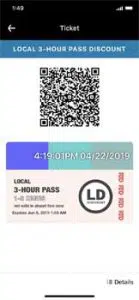Denver’s use of Uber for transit ticketing appears to be gaining traction among commuters. More than 1,200 tickets have been sold through the app since its May 3 launch, Uber Technologies Inc. announced Tuesday. That pegs growth at an average of 42% per week in the launch period, the ride-share provider said.
Denver’s Regional Transportation District announced the Uber transit-ticket capability in May in conjunction with transit fare-payment provider Masabi Ltd. and Uber. Consumers can use the Uber app to purchase RTD transit tickets. As with Uber car rides, users pay for transit with cards they have on file with Uber.

Critics of ride-share services such as Uber and Lyft Inc. have claimed the services have undercut mass-transit ridership in recent years. But Uber and Lyft both have been eyeing tie-ups with agencies that enable their riders to view transit schedules and get to and from train stations or bus stops. Initially, the app was available to a small group of consumers, but now is widely available.
Other data show that the number of repeat-ticket purchases using Uber Transit has increased each week since ticketing became available. As of the week of June 24, approximately 25% of tickets sold were purchased by return users.
Most riders—66%—use the app for local rides, but regional rides, such as to and from Denver International Airport, were the next most popular in-app ticket purchases at 23%.
“Twelve hundred transit tickets sold within the Uber app represents 1,200 decisions actively made to take transit, after considering all options available,” Dave Genova, RTD, chief executive and general manager, said in a statement. “And for travelers who take Uber after seeing that RTD is available to them, being made aware of our services ultimately broadens our reach.”
Uber says data and insights gleaned from Denver’s experience will be used in future Uber Transit projects, such as anticipated ones in London and Boston.
With the launch complete, Uber and the RTD intend to increase their marketing efforts with social media, email campaigns, notifications within the Uber app, and advertising wraps on train cars.



